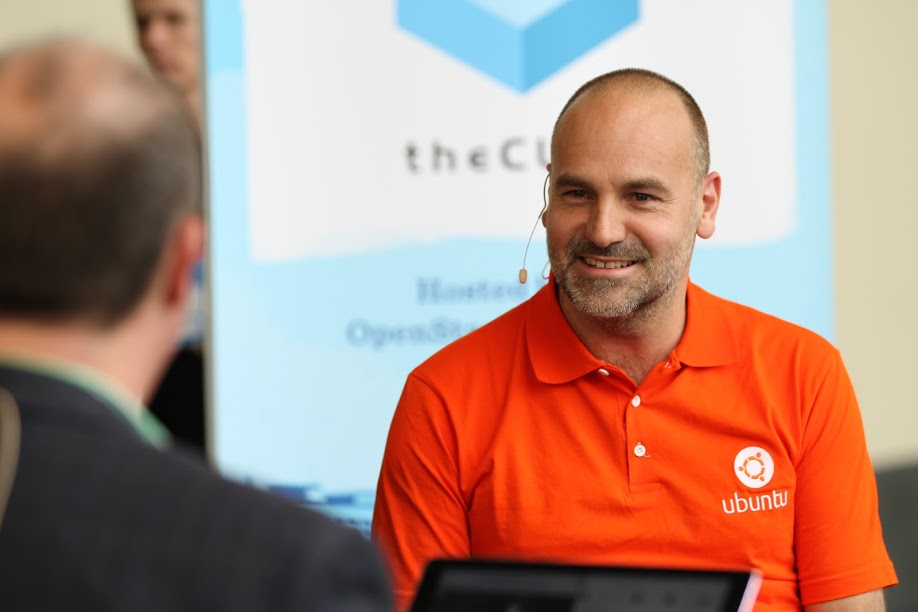 CLOUD
CLOUD
 CLOUD
CLOUD
 CLOUD
CLOUD
The evolution of the open-source infrastructure landscape and the mix of technologies helping move the cause forward was a primary topic of conversation at this week’s OpenStack Summit in Boston. One such tool — Canonical Ltd.’s Ubuntu, an open-source software operating system — is closely meshed with the OpenStack open-source cloud computing software, running everything from public and private clouds, to the Internet of Things, to containers.
“Ubuntu is the de facto standard, now, for cloud computing and the data center,” said Mark Shuttleworth (pictured), executive chairman at Canonical. He also said that, arguably, Ubuntu is the standard for edge computing as well. In the past 12 months, Canonical’s private infrastructure business grew 70 percent, and its private infrastructure business grew 90 percent — the company crossed $100M in bookings.
Shuttleworth recently joined host Stu Miniman (@stu) and guest host John Troyer (@jtroyer), of theCUBE, SiliconANGLE Media’s mobile live streaming studio, during OpenStack Summit. In addition to discussing Canonicals’ take on all things Ubuntu, they discussed the ins and outs of containers. (* Disclosure below.)
OpenStack is built into Ubuntu Server, and Ubuntu is the reference operating system for OpenStack. Canonical is a business that specializes in Ubuntu deployments. Working with its partners, Canonical ensures that Ubuntu runs reliably across every platform on which it is installed, Shuttleworth stated.
When it comes to containers, Shuttleworth explained: “We don’t want to essentially prescribe to people that Docker is the right way to do things or [Apache] Mesos is the right way to do things,” Shuttleworth explained. Canonical’s mission is to tell customers, ‘This is a fantastic new way of operating software,” he said.
Canonical seeks innovation, competition and a platform on which enterprises can consume all kinds of containers. Shuttleworth said there are really two kinds of containers, which are “quite separate.” The first is containers that are processes on demand, relating more to the processes and not the underlying machines.
The second is an infrastructure for managing the machines themselves. In this regard, OpenStack doesn’t need to be anxious about Docker, because Docker runs great on OpenStack, VMWare, bare metal and on public clouds, he concluded.
Watch the complete video interview below, and be sure to check out more of SiliconANGLE’s and theCUBE’s independent editorial coverage of OpenStack Summit 2017 Boston. (* Disclosure: Canonical Ltd. sponsored this OpenStack Summit segment on SiliconANGLE Media’s theCUBE. Neither Canonical Ltd. nor other sponsors have editorial control over content on theCUBE or SiliconANGLE.)
Support our open free content by sharing and engaging with our content and community.
Where Technology Leaders Connect, Share Intelligence & Create Opportunities
SiliconANGLE Media is a recognized leader in digital media innovation serving innovative audiences and brands, bringing together cutting-edge technology, influential content, strategic insights and real-time audience engagement. As the parent company of SiliconANGLE, theCUBE Network, theCUBE Research, CUBE365, theCUBE AI and theCUBE SuperStudios — such as those established in Silicon Valley and the New York Stock Exchange (NYSE) — SiliconANGLE Media operates at the intersection of media, technology, and AI. .
Founded by tech visionaries John Furrier and Dave Vellante, SiliconANGLE Media has built a powerful ecosystem of industry-leading digital media brands, with a reach of 15+ million elite tech professionals. The company’s new, proprietary theCUBE AI Video cloud is breaking ground in audience interaction, leveraging theCUBEai.com neural network to help technology companies make data-driven decisions and stay at the forefront of industry conversations.